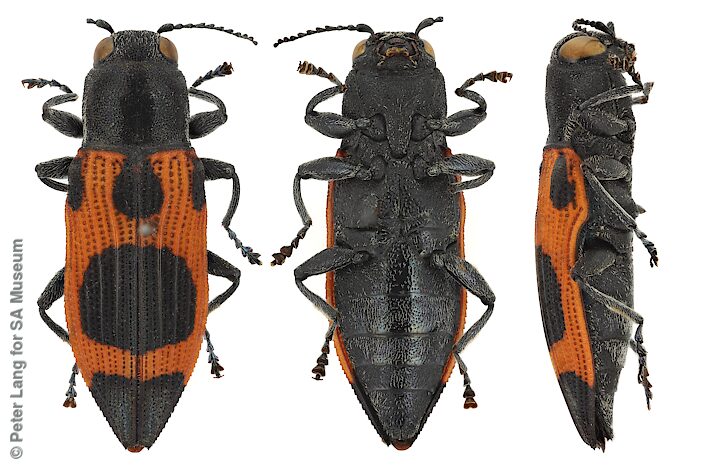
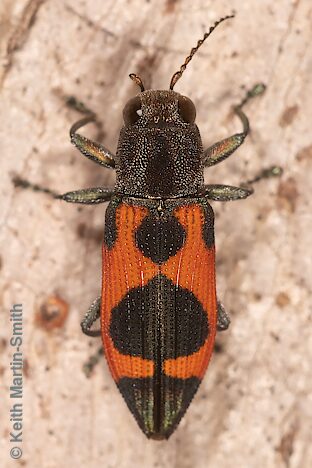
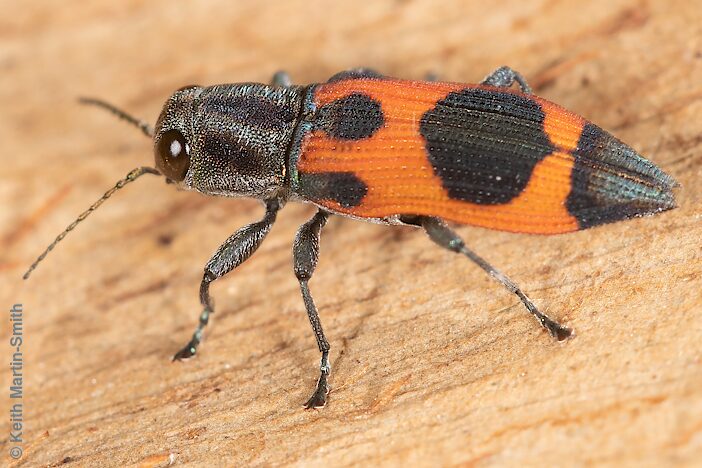
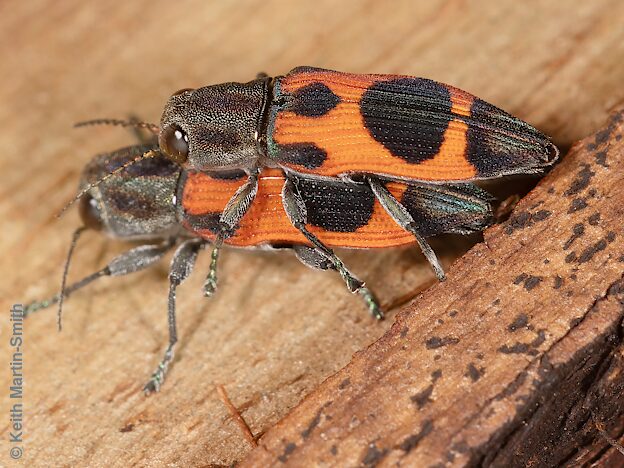
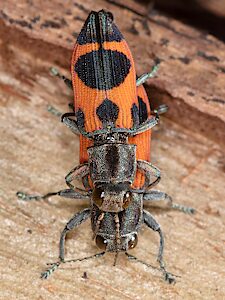
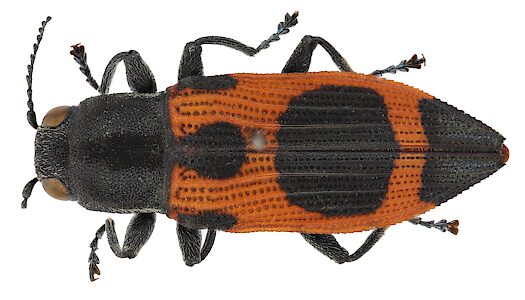
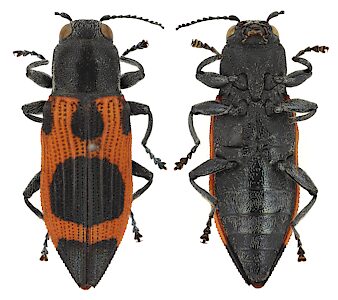
size¹:
×
3.4 mm







| female | ||||||
|---|---|---|---|---|---|---|
| L1 | 10.1 | n = 1 | ||||
| L2 | 9.9 | n = 1 | ||||
| W | 3.4 | n = 1 | ||||
| Legend | L1 | length from clypeus/frons to elytral apex (mean, range, sample size) |
| L2 | length from anterior of edge of eyes to elytral apex | |
| W | maximum width with elytra fully closed |
Nascioides parryi has a very distinctive aposematic colouration and patterning, with elytra in scarlet and black, and the head and pronotum black. Also, the body shape is relatively narrow, the pronotum is much narrower than the elytra and abdomen, and the antennae are prominent. These features give it a general resemblance to small red and black plant bugs, such as the Harlequin Bug (Dindymus versicolor), and it may even be a mimic of that species.
The type specimen was collected in Adelaide (Hope 1843) but the species is uncommon in SA. There have only been several other collections of it made in this State in all the years since it was described, and the localities are restricted to the highest rainfall areas. No other species of the genus are represented in SA.
Nascioides parryi is more commonly encountered in eastern Australia, and the endemic Australian genus Nascioides comprising 19 currently recognised species (ABRS 2020), exhibits its greatest diversity in those areas of northern New South Wales and Queensland that have the most developed rainforest (Williams 1987).
The resemblance I noted under 'Distinctive Features' above, accords with Cowie 2001 who also commented that 'the red and black pattern is reminiscent of the distasteful nymphs of true bugs (Hemiptera}' and suggested that it may confer 'protection from predatory birds'.
| Legend | P.J.Lang collection vouchered records | |
| other private collection or museum specimens, or sightings |
|
|
|
|
|
|
|
|
|
|
|
|
|
||||||||||||||||||||||||||||||||||||||||||||||||
|
|
|
|
|
|
|
|
|
|
|
|
|
||||||||||||||||||||||||||||||||||||||||||||||||
| Jul | Aug | Sep | Oct | Nov | Dec | Jan | Feb | Mar | Apr | May | Jun |
| Legend | live emerged adults, count > median value of 1 per quarter month | |
| live emerged adults, count <= median value of 1 | ||
| live non-emerged adults only, for that quarter month | ||
12 | number of active beetles for that quarter month |
| beetles | sites | SA regions¹ | family | position on host plant | ||
| Eucalyptus sp. | 1 | 1 | KI | M |
| Legend | beetles | count of beetles collected from, or sighted on, host plant taxon |
| sites | count of major sites (unique 10 km grid cells +/- some distinct approximate localities) |
| Code | beetles | % | host plant taxa | |
| M | Myrtaceae | 1 | 100% | 1 |
| position | beetles | sites | |
| on dead foliage | 1 | 1 |
The only host information for SA is from a single Kangaroo Island specimen collected on 'dead Eucalyptus leaves'.
In eastern Australia Hawkeswood 1986a observed two adults feeding on leaves of young saplings of Eucalyptus viminalis (Manna Gum), at Armidale, NSW. In the same work, he reported a breeding record of 7 adults reared from Eucalyptus tindaliae (Queensland White Stringybark) [as E. phaeotricha] north of Brisbane, Qld, by A.R. Brimblecombe. Hawkeswood has also reported incidental records from a fruiting Hawthorn Crateagus monogyna and a Dandelion (Taraxacum sp.) but considered them 'unlikely to be adult food plants' (Hawkeswood 2007f).
Significantly, Cowie 2001 also recorded Eucalyptus viminalis as an adult host in Tasmania, noting that N. parryi 'can sometimes be seen running up and down the bark of trees and can be beaten from foliage' and is 'occasionally found on blossom'.
| ¹ Legend | regions | SA State Herbarium regions (map) EA: Eastern, EP: Eyre Peninsula, FR: Flinders Ranges, GT: Gairdner-Torrens, KI: Kangaroo Island, LE: Lake Eyre, MU: Murray, NL: Northern Lofty, NU: Nullarbor, NW: North-Western, SE: South-Eastern, SL: Southern Lofty, YP: Yorke Peninsula |
| size | The ellipse is the correct size when printed, indicative on a desktop screen, and likely to be wrong on a mobile device. |